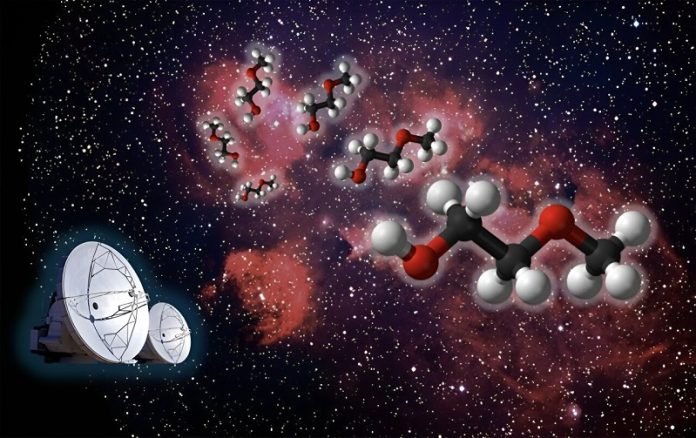
In a significant scientific achievement, researchers led by Professor Brett McGuire at MIT have discovered a new molecule in space, marking a milestone in our understanding of the cosmos.
The discovery, detailed in their paper published in The Astrophysical Journal Letters, introduces 2-methoxyethanol—a complex molecule found in a region where stars are born.
Zachary T.P. Fried, a graduate student and lead author, coordinated international efforts spanning from MIT to institutions in France, Florida, Virginia, and Copenhagen to make this exciting find.
Exploring the Unknown in Space The McGuire group focuses on identifying molecules in space regions destined to form stars and planets.
By studying the rotational spectra—unique light patterns emitted by molecules as they rotate—the team can identify molecular “fingerprints” or “barcodes” in the cosmos.
To discover new molecules, researchers first predict what molecules might exist by studying their spectra in laboratories on Earth.
They then search for these patterns in space using powerful telescopes. This method has proven effective, especially with the help of machine learning techniques to pinpoint potential targets.
A Milestone Discovery The research team targeted 2-methoxyethanol, a molecule more complex than any ‘methoxy’ molecule previously identified in space.
Collaborative efforts with various international institutions allowed them to measure the molecule’s rotational spectrum over a broad frequency range.
This extensive groundwork enabled them to use the Atacama Large Millimeter/submillimeter Array (ALMA) to search for 2-methoxyethanol in space.
The team’s persistence paid off when they identified 25 unique rotational lines of 2-methoxyethanol in the star-forming region NGC 6334I, confirming its presence. This region is a nursery for new stars, making it a critical area for such research.
Understanding New Complexities This discovery of 2-methoxyethanol, a molecule containing 13 atoms, is notable because it belongs to a small group of large molecules found outside our solar system, most of which are ringed structures.
The identification of such a complex molecule provides valuable insights into the molecular complexity that can arise in space environments, offering clues about the chemistry that accompanies star formation.
Furthermore, detecting 2-methoxyethanol in one star-forming region but not in another (IRAS 16293-2422B) offers a unique opportunity to study how different conditions in space can influence chemical processes.
The Impact of Molecular Astronomy Discoveries like these expand our understanding of how large molecules form in space and the specific reactions that produce them.
This research not only adds to our knowledge of space chemistry but also sheds light on the processes that occur as stars and planetary systems take shape, bridging the gap between cosmic phenomena and the chemical elements that define them.
As we continue to explore and identify molecules in space, each discovery adds a piece to the puzzle of our universe’s vast and complex nature.



